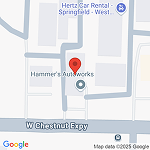Ever wonder why you can proceed through the red light at an intersection so long as you’re turning right? The objective is to keep the flow of traffic steady and prevent a long line of cars from forming at the stop. As automatic as turning right on red is for most drivers, there are three crucial things to keep in mind that will help ensure you’re doing it properly and safely.
So, without further ado, here are the rules for turning right on red.
 Stop Behind the White Line
Stop Behind the White Line
Most every intersection you come across will be equipped with a white line. This line is in place so drivers know where they’re supposed to stop as they approach a red traffic light. Ideally, it also serves the purpose of allowing your fellow drivers to safely navigate around traffic while maintaining visibility. It’s also there so that pedestrians have a place to take advantage of the crosswalk.
It’s imperative that drivers turning right on a red come to a complete stop at this white line. Not only will stopping allow you to proceed safely, it’ll keep you from getting a ticket for rolling through a stop.

Take a Good Look
The primary reason to come to a complete stop when turning right at a red light is to make sure your path is clear, but there are other things to watch for as well.
Such as signs. While right on red is common throughout the country—and has been since 1980—there are select places where right on red is either prohibited or controlled by dedicated traffic signals. You’ll want to make sure you’re stopped long enough to check for signs and verify that you are, in fact, allowed to turn right on red.
You will also want to watch for pedestrians. Pedestrians have the right of way, whether they’re already on the crosswalk or simply getting ready to cross. It’s illegal to drive onto the crosswalk if there are people there, and it can create a dangerous situation.
And obviously, you’ll want to look for oncoming traffic. Stopping allows you to look for an opening into which you can pull without slowing traffic or endangering others.
These steps can be performed in a matter of seconds after you have pulled to a stop at a traffic sign. No matter how long you’ve been driving, it’s important not to rush through them, both for your safety and the safety of others.

Proceed with Caution
Once you have ensured there aren’t signs or obstacles, it’s time to make a turn. You will still want to take your time, as bicyclists and motorcyclists can be difficult to spot and can quickly crowd in behind you. You must also account for other drivers. There may be vehicles ahead that are turning into the lane you’re trying to enter.
After you have completed your turn, you will want to match the flow of traffic.
Like using a turn signal, a lot of this might seem self-explanatory too much complacency behind the wheel might mean a visit to Hammer’s Autoworks. We’ll fix it right and get you back on the road, but the best type of accident is the one you never have. Use caution and good judgment when on the road.

